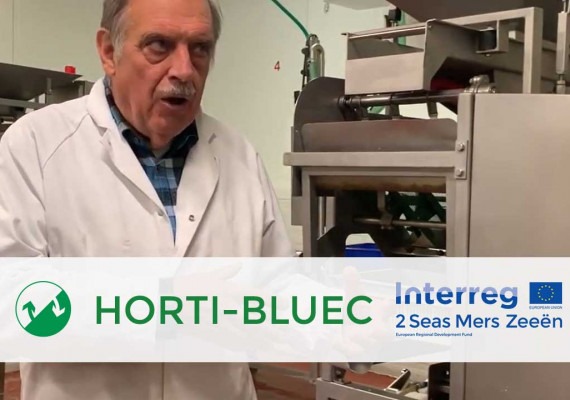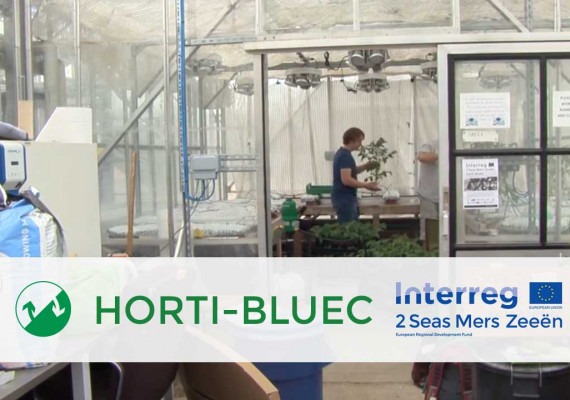Horti-blueC
Sustainable up-cycling of agro-, agrofood and fisheries residues in horticulture and agriculture as bioenergy, biochar and chitin-rich products
Priority Axis
Resource Efficient EconomySpecific objective
Circular Economy
Lead partner
Institute for Agricultural and Fisheries ResearchContact
Begindatum
02/02/2018Einddatum
30/04/2022Project budget
3 353 732 €ERDF amount
1 864 982 €ERDF rate
56%Over
Common challenge
There is a need for circular economy solutions in waste processing and in greenhouse horticulture. Several waste streams are not optimally valorised although they have potential as raw material in the circular economy.
Promising techniques for these raw materials such as gasification need to be demonstrated, while results indicate that biochar and chitin have potential as renewable alternative for chemical fertilizers and pesticides.
The co-production of bio-energy and biochar is a new technique with high potential for closing the cycle by reducing CO2 emissions during bio-heat production while providing biochar for specific applications.
On the other hand, there is a clear societal demand for higher sustainability in soilless cultivation and the reduction of the pesticide and chemical fertilizer use in soilless cultivation.
However, current cultivation standards are still based on high peat, coir, stone wool, pesticide, and fertilizer use. Growers are looking for solutions to cope with the demand for low pesticide residues and risks for pathogens.
Both customers and policymakers across borders for the whole region demand lower chemical nutrient and pesticide use in horticulture.
There is a clear legislative demand for lower residues on fruits and vegetables (survey veiling Hoogstraten 2015).
The Horti-BlueC has answered those challenges.
Overall objective
Main outputs
Cross border approach
Main Achievements
The project was successful in reaching the objectives, and in being in contact with the target groups.
A test was run at TNO in spring 2021 to prove the feasibility of biochar production in a continuous way. Co-producing Biochar and bio-energy was operated continuously for over 100 hours in the Enerchar pilot installation. The reconstructed pilot-gasifier was put into operation in March 2021. Only 4 days of optimization were required before this duration test could be performed. Analyses showed that the biochar was of excellent quality. 1600 litre of biochar was produced in a continuous production test of 116 hours. The test confirmed that continuous production of biochar was achieved. Part of this 1600L was used in growing media blends for the greenhouse trials in WP2.
In the project, more than 60 m3 of growing media blends were produced and tested. The results of the greenhouse trials were also communicated based on user group meetings, conferences and through YouTube. Cross-border cooperation was illustrated by webinars for contacts from the different regions.
The 6 months extension of the project (a Covid19 related decision) also induced some opportunities for Horti-BlueC for more trials and participation in postponed events.
In terms of communication, the project received a lot of attention. Some special events in the third year of Horti-BlueC are worth mentioning. The project reached more than 700 people during the 2021 user group meetings. In 2021 and early 2022, 5 A1 papers (all open access) and 7 ISHS proceeding papers were published. Restyling website in spring 2021. Past events are now also on the website and still consultable. The recordings of the 4 webinars have already been consulted more than 1000 times. Two of the videos released in 2021 already have more than 1000 viewers as well.






